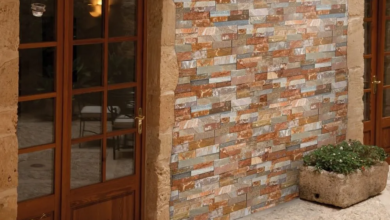TV Mounting: Not So Simple After All

Mounting a TV in your living room is a terrific way to clear up space. It’s a good idea to maintain your new OLED screen clean if you have kids who want to play with devices that they shouldn’t be playing with. The mounting of a TV is a contemporary home décor mainstay in aesthetic appeal; the kind of TV brackets you use will determine the quality. It is visually appealing, particularly as televisions continue to shrink in size. There are several options for placement, including over a fireplace or flat wall. If you’re not sure where to place your new TV, how to mount it, or what kind of hardware you’ll need, this guide will help you figure out what to look for in your house and what you’ll need to get the job done.
What is wall-mounting?
In most cases, drywall-compatible TV wall mounts come with everything you need to install them, including bolts and anchors. A wall mount will not have the necessary hardware for putting it on a plaster or brick surface. What kind of material are your walls made of? A trip to your local hardware or home improvement shop may be essential to get the appropriate power equipment and supplies. In terms of position, it is recommended that you avoid installing your TV over your fireplace if at all possible—check out this post for opinions on that contentious issue! The VESA pattern, which is used by all televisions, is compatible with most TV brackets. That generic pattern’s name is the Video Electronics Standards Association (VESA), and it doesn’t matter which one you choose when it comes to wall-mounted televisions.
Flexibility in terms of weight and size
When shopping for wall mounts online, the most significant consideration is the weight they can handle, not the size of the TV it supports. The weight of different companies’ TVs varies despite the same size. Check out the product description to discover how much weight and screen size a TV wall mount can carry. These instructions may be found in the wall mount’s packaging. The next thing to consider is how much freedom you want your TV to have while installed. To watch your TV from different rooms, you may want to consider a revolving wall mount. Even if you’re not sitting precisely in front of the TV, you may adjust the angle of the TV to get the best image possible. Invest in a TV wall mount that tilts down to enhance image quality if you’re hanging your TV above the average eye level (42 inches). Fortunately, most mounts can rotate and tilt.
Using a permanent mount for a flat-screen TV is easier if you don’t need to access the TV ports frequently, and the TV will be closer to the wall. To get a more refined look, go for a thin mount—many claims to hang this close to the wall. When installing a television in a corner, you’ll likely need a specific corner mount to do so. A fully articulating mount is needed to keep the television stretched at all times.
Another issue is the availability of a wide variety of television channels. Combining the best of both worlds, these universal bases come with VESA-certified mounting arms and wall installation brackets. In most cases, you can modify the height of the TV brackets, and many versions also enable you to tilt and rotate your TV.
To sum up, while choosing a TV wall mount, bear in mind the kind of mount your needs, as well as the weight the mount can support. Just relax and watch your favourite programme or movie after you’ve fitted the wall mount and connected the TV.





Your point of view caught my eye and was very interesting. Thanks. I have a question for you. https://www.binance.com/id/register?ref=53551167